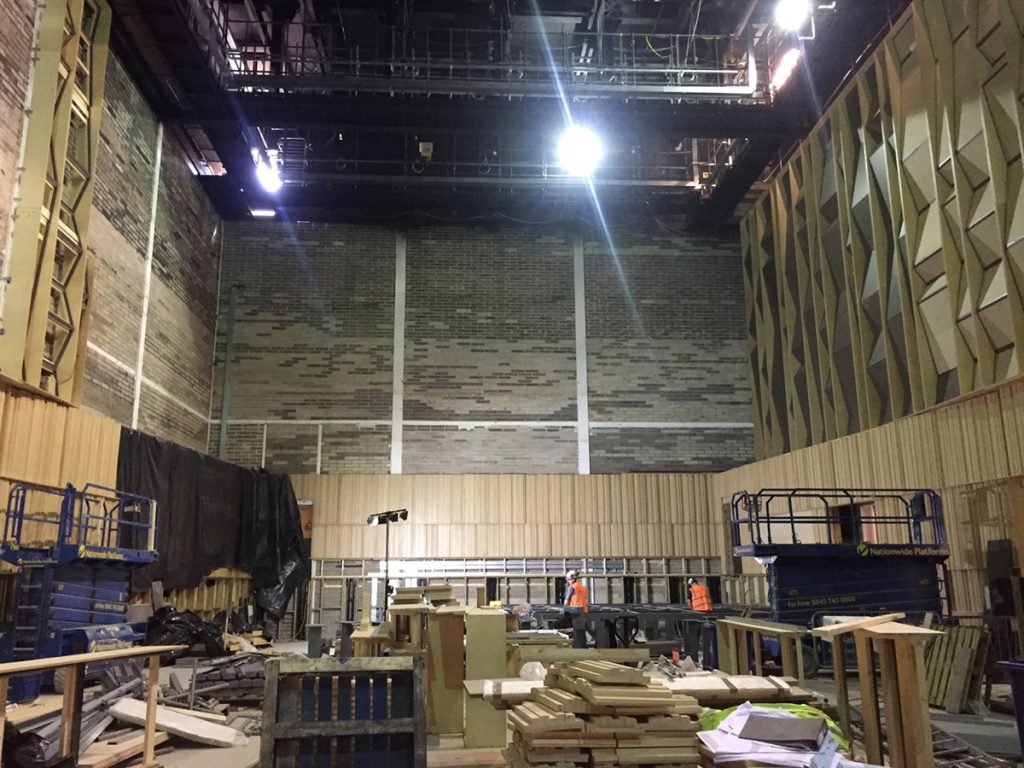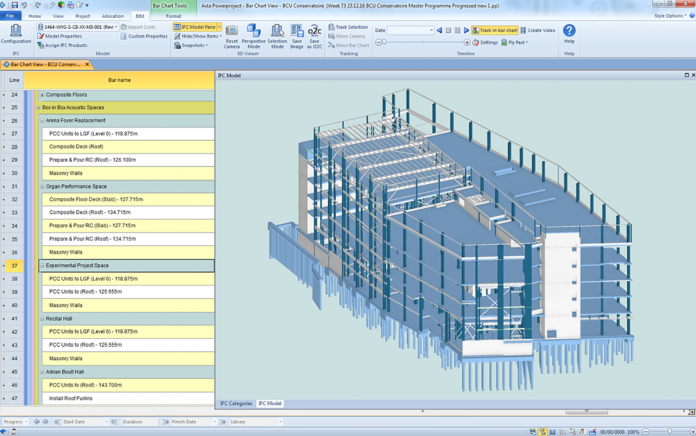Jason Ruddle, Managing Director at Elecosoft explains how using BIM on projects provides the best outcomes for customers by providing a clear 4D planning view
As a developer of planning software, we work hard to ensure customers can put our tools to best use and gain maximum benefit for their business. At times, projects can be challenging – but often help push boundaries. This project by Galliford Try is a great example. It illustrates the increasing importance of having a clear 4D planning view, to help overcome technical challenges, and deliver full visibility of a construction project for everyone involved.
The £57 million project for Birmingham City University is creating the UK’s first new Conservatoire since the mid-1980s. It has been designed around multiple performance spaces including a 500-seat main concert hall, a 150-seat Recital Hall and three other venues, as well as teaching facilities.

Having commenced on 3rd August 2015, the project is scheduled to complete in August 2017 and is due to open for the new academic year in September 2017.
It was designed as a BIM project from the outset. Having always had a significant belief in quality standards, Galliford Try was among the first wave of contractors to secure its full BIM accreditation.
Technical challenges were presented by the acoustic requirements of this performance venue. The building has been designed using a ‘box in box’ construction approach, incorporating five independent steel frames for each main space, isolated from the main building structures via resilient individual anti-vibration acoustic mountings, which effectively create completely floating floors. It meant the addition of some specialist sub-contractors. Innovative methods of construction and working processes were required.
4D BIM delivers extra perspective
The project’s BIM model was designed by the architect in Autodesk Revit, into which would be incorporated numerous sub-contractor programmes. Although it would be updated regularly, and a comprehensive as-built documentation stack would be compiled by the site team, Galliford Try decided that creating close integration between the model and programme activities would be critical to maintaining control, managing progress, and assuring excellent communications during the project. Galliford Try is a regular user of Asta Powerproject as a planning software platform; it adopted the BIM version of the software to deliver that integrated perspective.
When the project started, graduate Ibrahim Patel had recently joined the group as a planner, with the new Birmingham Conservatoire as his first project. He was given the task of creating a 4D plan that would give the project team an integrated view of activities and progress of the building in the form of a 3D visualisation. It provided a hub into which all the as-built information marked up on working drawings and documents could be integrated, to maintain a current view of progress.
“The 4D BIM model we created in Asta Powerproject BIM gave us a visualisation model alongside our main BIM model” he explained. “It instantly becomes easier to see both what is planned, and what has happened, in one place.”
The visualisation provided an integrated view of progress for the planners and was made accessible via SharePoint to senior management if they required it. However, it became most valuable when used as the basis for client communication: “The visualisation you create in Asta Powerproject BIM benefits the client. When they come in for their monthly meeting, we can easily produce a video to show the planned model versus an actual model. That shows them within just a few minutes exactly where the project should be and where it is.”
Sub-contractor communication was also a beneficiary, as Ibrahim outlined: “We have progress meetings with individual sub-contractors where we pull up the Asta Powerproject programme and go through their works. As well as discussing how far they have come along and anything they are putting in place to get back on track, we can also look ahead. We can re-sequence works to save us time in the future or avoid several contractors working in the same space at the same time.”
The software was used to link as-built information to the visualisation. “Asta Powerproject BIM gives us a high-level overview of the project. As we get into the nitty-gritty of activities, we capture information within our as-built documents. For example: for an elevation of brickwork, we have a drawing that’s marked up to show the brickwork that has gone up each week, which goes into the as-built document stack. We can take that information and put it into Asta Powerproject BIM, and the model then gives us a visual overview of what has happened too.”
Driving a digital future
Digital construction technologies are new to some in the construction sector. However, Ibrahim was more than confident enough to adopt the new software, having recently completed his degree in Architectural Design Technology at Coventry University. As a digital native, learning the software was an intuitive process, following a quick introduction to Asta Powerproject from a senior planning colleague. However, Ibrahim appreciates the support that Elecosoft can provide:
“The really good thing about Elecosoft is that whenever you need support or want to talk to somebody, you ring them and there’s always someone there to help. Support has always been there. I know they are listening to people too, because of the new features that are planned for the next release, which I learned about at a recent user event – some are going to make my life much easier.”
Jason Ruddle
Managing Director
Elecosoft
Twitter @astapmsoftware
Please note this is a commercial profile





![[Video] Fireco: 80 new fire doors required for residential flats in London](https://www.pbctoday.co.uk/news/wp-content/uploads/2025/04/2024-06-01-Lords-view-one_1200x750_004-218x150.webp)








